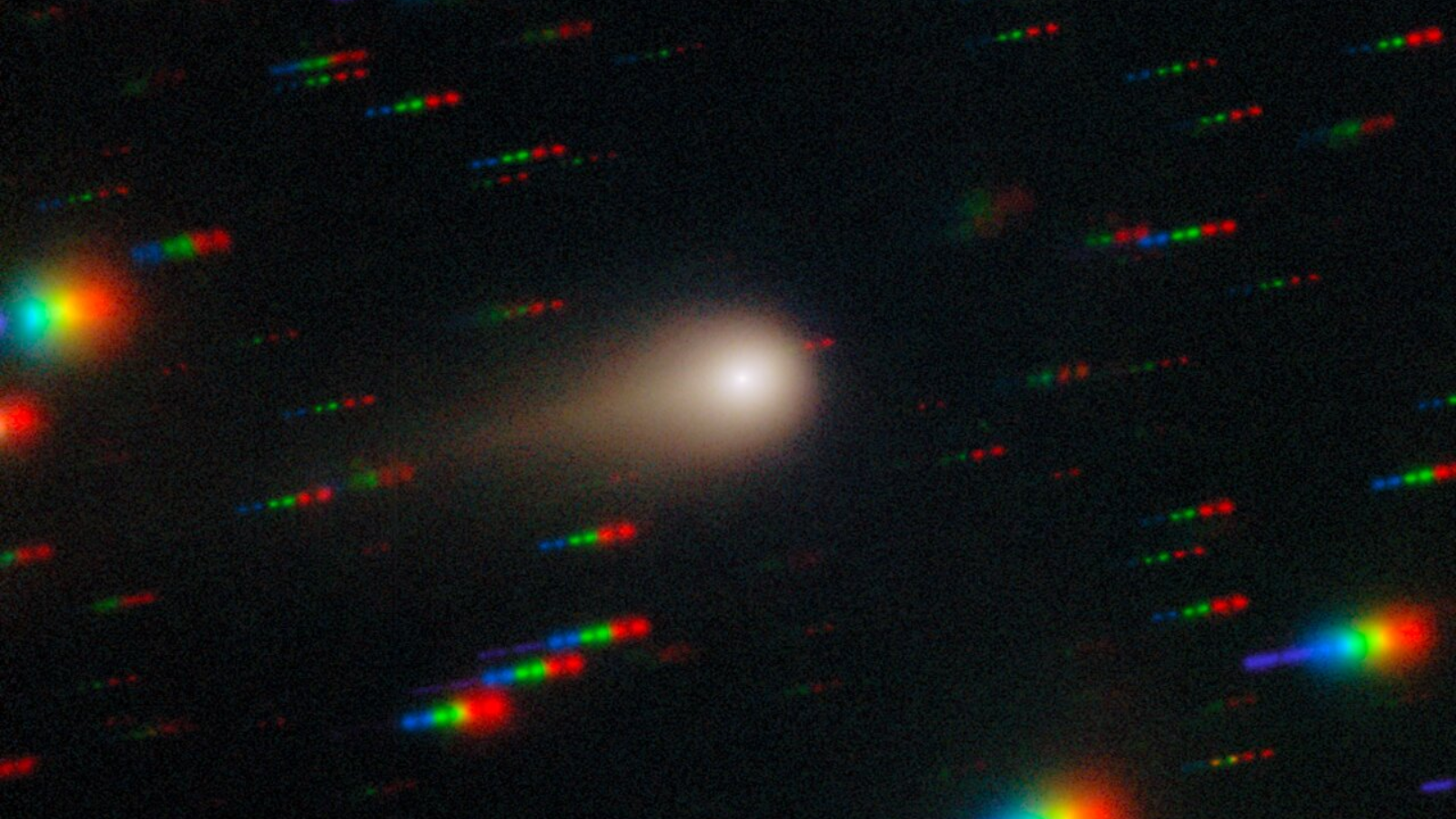In an unprecedented discovery, NASA’s advanced artificial intelligence analysis of the interstellar object 3I/ATLAS has revealed that it is not a comet or asteroid, but rather a living vessel containing a fully functioning alien ecosystem.
The revelation has stunned astronomers and astrobiologists worldwide, suggesting that life beyond Earth may be far more complex and organized than previously imagined.
3I/ATLAS: More Than Just an Interstellar Visitor
3I/ATLAS entered the Solar System in 2024 and was initially classified as a comet due to its trajectory and icy surface. However, detailed data from the James Webb Space Telescope (JWST), processed by NASA’s AI systems, revealed dynamic internal structures and signs of active growth inconsistent with any natural comet.
According to NASA officials:

-
Infrared imaging detected organic structures resembling plant-like growth.
-
Spectroscopy identified complex biochemical compounds that are indicative of a living ecosystem.
-
The AI analysis suggests the object is self-sustaining, with its internal environment supporting continuous growth.
“This is nothing like we’ve ever seen,” said Dr. Lena Ortega, an astrobiologist at the European Space Agency.
“Our AI models indicate that 3I/ATLAS is actively maintaining an internal ecosystem — essentially an alien forest traveling through space.”
A Living Interstellar Vessel
NASA’s AI detected patterns of internal growth and self-repair within the object, suggesting that it behaves more like a living organism than a rocky body.
“It’s almost as if 3I/ATLAS is a cosmic ark — carrying an entire biosphere across the galaxy,” Dr. Ortega explained.
“We’re seeing structures that resemble trees, vines, and other plant-like formations, but made of unknown biochemistry. The entire vessel seems alive.”
Implications for Life Beyond Earth
If confirmed, this discovery could revolutionize our understanding of biology, ecology, and space travel:
-
It suggests that life can survive and adapt in interstellar space.
-
It raises the possibility that advanced civilizations could engineer living vessels to transport ecosystems across the stars.
-
It challenges the distinction between object and organism, showing that the line between life and inanimate matter may be far more blurred than previously thought.
“This is a wake-up call,” said Dr. Marcus Li, planetary scientist at Caltech.
“We are witnessing a form of life not confined to planets — and it may be far older and more complex than anything on Earth.”
Next Steps
NASA, ESA, and other international space agencies are now coordinating a global observation campaign, tracking 3I/ATLAS as it continues its journey through the Solar System. The AI systems will continue monitoring growth patterns, biochemical signals, and possible signs of intelligent design.
Scientists caution that while the object is not an immediate threat to Earth, the discovery presents unprecedented opportunities to study life beyond our planet.
Humanity’s Window Into the Cosmos
As 3I/ATLAS drifts closer, the world watches with awe and curiosity.
For the first time, humans may be able to observe a living extraterrestrial ecosystem traveling across the stars, offering insights into the possibilities of alien life and interstellar biology.
“The universe is teaching us that life is far more resilient, creative, and surprising than we ever imagined,” Dr. Ortega said.

